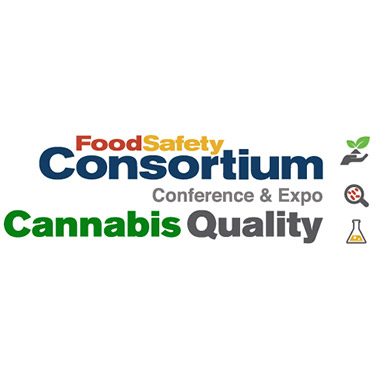Step into the lawyer’s kitchen with food attorney Jennifer Allen, Partner at Zwillinger Wulkan, as she breaks down new food labeling requirements for bio-engineered ingredients.


Step into the lawyer’s kitchen with food attorney Jennifer Allen, Partner at Zwillinger Wulkan, as she breaks down new food labeling requirements for bio-engineered ingredients.

Those who work in the food safety and quality industry may know Tami Dumond, microbiologist and Director of Quality Assurance at Omeat, by her oft-changing vibrant hair color. Her career has been equally varied. Dumond has worked as a scrub nurse, QA lab manager and owner, motorcycling instructor and food quality manager and director.
Tami spoke at a recent meeting of the Women in Food Safety about the path that brought her to her current leadership position at Omeat, a tissue engineering company scaling cellular ground beef, and the value of varied work experiences.
After graduating high school, Dumond entered a one-year hands-on certification program to become a scrub nurse. “It taught me a lot about showing up and the importance of processes and protocols,” she said. “Almost everything I do in food safety and quality brings me back to things I learned in surgery.”
She chose the program because it allowed her to pursue her interest in science without going to college. “I am dyslexic and I didn’t want to go to school anymore,” said Dumond. “I liked school, but it was very hard for me.”
When she became a single mom, she decided to go back to school to earn a Bachelor’s degree, and got a part-time a job at an external quality control laboratory that worked with several food companies, eventually becoming co-owner of the lab. “I learned I was good at managing things,” said Dumond. “I’m a partier and I want to invite everyone to the party. I solidify my teams by including everyone and making sure they always have fun during training.”
When the economic recession of 2008-2010 hit, rather than cut staff or pay at her lab, she chose to take on the second job as a motorcycling instructor to help make ends meet. “The students would read what they’re supposed to do, hear what they’re supposed to do, watch the instructor and then we watch them,” said Dumond. “That repetition and format of learning—if you didn’t get it verbally, you got it visually—reminded me that different people learn in different ways, so you need to offer information in multiple formats.”
During this time she also joined a local Roller Derby team, “The Soy City Rollers,” as MRSA Nary (mercenary), an experience that brought into focus the joy of being part of a team and, again, the importance of having plans and protocols. “Teams that play well have a playbook,” she said. “If you don’t have a process in place, pull out a whiteboard and write one right away, and do it with your team.”
After 20 years at the lab and 11 years teaching motorcycling, Dumond—now a microbiologist—decided it was time for a change. She moved to Austin, Texas, with an eye on entering the field of food safety. “I wanted to be more involved in the food industry, because that is where a lot of innovation was taking place,” she said.
She got a job as food quality manager at ATX Specialty Foods, before moving to Omeat. Her goal as Director of Quality Assurance is to empower her team and bring a culture of food safety to the entire organization by making it as easy as possible for people to do the right thing. “I try to empower my teammates and create trust so they know they can come up and talk to me anytime,” she said. “I involve the entire team in training and when anything new is happening. I have made everyone aware of the importance of everything that goes on in the lab. Maintenance team members come to our PCR training so they can better understand the equipment.”
She values the relationships she has built with her teammates throughout her career and stays in contact with many past colleagues and employees. “Even if you leave a company, you don’t leave the people you worked with,” she said. “You never want to burn bridges.”
Today, Dumond describes herself as a quality scientist who specializes in biological business modeling. In addition to her role at Omeat, she is the founder of Qronika Consulting, which focuses on food safety training and industrial biome investigations. The company is named after a video game character. “Qronika is a titaness of good and evil, who knows you must balance good and bad to move through life,” said Dumond.
In her free time, she volunteers with Texas Food Bank and Food Rescue, as it provides the opportunity to support her community and experience different approaches to how people work with food.
Looking back on her career, she credits her success to always meeting challenges with action. “You have to show up and make the best of the situation,” she said. “And we, as a food industry, need to start paying attention to cellular Ag, and being more high-level in the biological sciences of food safety and quality.”
During the meeting, Tami shared her “Words to Live By”:
I Like to Break Things. If you break things, they can be fixed. If something is wrong, then we’ve got to dismantle it and rework it.
I am Petty. Every quality professional is petty. We worry about the small things.
I Take Things Personally. My life and my career is personal to me
I Party a Lot. I am an entertainer. I am an artist. I try my best to make everyone comfortable in a conversation. With me, you’re going to have a good time and I’m going to figure how to get what I need to get from you in order to make your job better.
I’m a Time Traveler. Everything I’ve done since that first job as a scrub nurse at 18 has brought me back to what I learned when I was 18.
I Steal Things. If a teammate has a good idea, it’s going upfront and I want it. We’re always downloading stuff, incorporating it and making it our own. Don’t waste opportunities or other people’s knowledge.
I Enjoy Being Afraid. Fear means there is an unknown. When we’re afraid, if we can understand that it’s a fear of the unknown then we can learn and become less fearful.

Registration for the 11th Annual Food Safety Consortium, which will take place October 16-18 at the Hilton Parsippany in New Jersey, is now open.
Presented by Food Safety Tech, the Food Safety Consortium is a business-to-business conference that brings together food safety and quality assurance professionals for education, networking and discussion geared toward solving the key challenges facing the food safety industry today.
In addition to two full days of high-level panel discussions, this year’s program will include a second Food Safety Hazards track. These “Boots on the Ground” sessions provide education on the detection, mitigation, control and regulation of key food hazards.
New this year is a strategic co-location with the Cannabis Quality Conference (CQC), a business-to-business conference and expo where cannabis industry leaders and stakeholders meet to build the future of the cannabis marketplace. Registered attendees get full access to both conferences.
Registration options are available for in-person and virtual attendance.
The Consortium will kick off with presentations from Erik Mettler, Assistant Commissioner for Partnerships and Policy in the FDA’s Office of Regulatory Affairs (ORA), and Sandra Eskin, Deputy Under Secretary for Food Safety at the USDA FSIS, followed by a Town Hall with the regulators.
Other agenda highlights include:
View the full agenda and register here.
Attendees will also have the opportunity to take part in pre-conference workshops on Monday, October 16, including:
Event Hours
Monday, October 16: 8:30 am – 5:00 pm (Pre-conference Workshops)
Tuesday, October 17: 8 am – 6:30 pm
Wednesday, October 18: 8:30 am – 3:45 pm
Tabletop exhibits and custom sponsorship packages are available. Contact Sales Director RJ Palermo.
About Food Safety Tech
Food Safety Tech is a digital media community for food industry professionals interested in food safety and quality. We inform, educate and connect food manufacturers and processors, retail & food service, food laboratories, growers, suppliers and vendors, and regulatory agencies with original, in-depth features and reports, curated industry news and user-contributed content, and live and virtual events that offer knowledge, perspectives, strategies and resources to facilitate an environment that fosters safer food for consumers.
About the Food Safety Consortium
The Food Safety Consortium is an educational and networking event for Food Protection that has food safety, food integrity and food defense as the foundation of its educational content. With a unique focus on science, technology and compliance, the “Consortium” enables attendees to engage in conversations that are critical for advancing careers and organizations alike. Delegates visit with exhibitors to learn about cutting-edge solutions, explore high-level educational tracks, and network with industry executives to find solutions to improve quality, efficiency and cost effectiveness in the evolving food industry.

The world’s population now exceeds 8 billion people. For the food industry, this means more than just additional mouths to feed; it also means changing consumer tastes, higher demand for more product variety, and the need to balance product safety and sustainability, along with profitability.
In a rapidly changing environment, digital solutions help companies make informed business decisions quickly. The missing component is rarely a lack of data itself. To stay competitive, and appropriately balance safety, sustainability, and profitability amid a growing population, companies need to reap the full benefit of their existing operational and process data to gain valuable insights and efficiencies. Data analytics and digital tools empower companies to collect, centralize, and extract actionable data-driven insights generated throughout the entire manufacturing lifecycle. While digital transformation can sometimes be overwhelming, there are specific steps you can take to realize important benefits, quickly.
Food and beverage manufacturers generate large amounts of data during the process of turning raw materials into finished products, including information about equipment run time, product quality, and energy consumption.
Despite the need to share and analyze this data collaboratively, industrial data is often stored in separate systems, managed by different teams, and at times governed by inconsistent processes. These data silos impede collaboration, diminish quality control and safety measures, and ultimately hurt the bottom line. In a highly regulated industry, simple missteps can negatively impact brand reputation in addition to causing compliance violations and regulatory penalties.
Subscribe to the Food Safety Tech weekly newsletter to stay up to date on the latest news and information on food safety and quality.
Consider a food manufacturer that produces packaged goods. An unplanned stoppage in production can lead to safety incidents, product contamination and losses, and energy wastage. Connecting manufacturing data across functions and generating contextual insights will result in proactive planning and maintenance scheduling.
A manufacturer with disconnected inventory management and production planning systems cannot accurately forecast product demand or adjust its production schedules. This results in missed insights and excess inventory or stockouts that lead to increased costs, and/or missed sales opportunities. In both scenarios, a robust data and digitalization strategy could reduce process disruptions or deviations, product waste and recalls, and revenue loss.
Robust data analytics and management tools can provide value across the organization. The following strategies will help ensure digital initiatives deliver maximum value nearly right away throughout the entire manufacturing cycle. These quick successes help the pave the way for long-term digital integration.
Start with small initiatives. It is usually most effective to start small when it comes to digital initiatives. Pick a single site or production line, identify an urgent pain point to solve, and develop a focused approach to applying analytics. This strategy ensures a targeted investment of resources and time, as well as the opportunity to test and refine strategies.
After initial project success, it is often helpful to step back and evaluate what worked, what did not work, and review best practices for deploying the technology at scale.
Set clear goals and metrics. Setting clear, measurable goals and metrics allows you to monitor progress. For example, a company might want to work toward reducing equipment downtime by 20% within the next six months. In addition, it’s often helpful to have a champion in the organization who will push for innovation, track progress, and serve as a motivator across the company.
Build data-driven operations. Comprehensive data-driven solutions have embedded domain expertise to make employees’ jobs easier by freeing them up for high value work. The key is to invest the time, energy, and resources in training employees effectively.
When deploying AI and other data-driven technology, focus on high-impact areas for quick wins. Centralized data management systems can seamlessly connect sensors, IoT devices, legacy systems, or other interfaces in production processes, allowing engineers and managers to focus on problem solving versus data collection and analysis.
For instance, AI-powered process analytics software can analyze process data, monitor variables that are likely to produce an off-spec product, automatically alert the team when a problem needs to be addressed, and prescribe changes to address the issue. Likewise, predictive maintenance solutions can use this data to detect equipment failures early and accurately, thereby reducing downtime events. These solutions also have built-in prescriptive capabilities to guide and empower maintenance personnel to address equipment issues in a timely manner.
Leverage data to identify areas for future innovation. Beyond solving today’s production pain points, data analytics can transform manufacturing for the future by helping companies respond to changing consumer preferences and needs, including the increase in health-conscious consumers and the global rise in food allergies. By analyzing this kind of data, the industry can identify areas where innovation is needed. And, as new products are developed, existing solutions can be leveraged to increase flexibility and efficiency in production lines for data-driven growth.
By unlocking the true value of data, companies can generate insights with their digital transformation strategies that optimize production, reduce waste, and improve profitability while ensuring consumer safety.

My food safety journey was nurtured at an early age by my parents. I grew up in a farming family in a country (Kenya) where small scale food producers are the backbone of the economy. We lived within an agricultural research institute where my father worked. This enabled me to develop a lived awareness of the myriad of challenges that producers face, including affordable ways to manage pests and other food safety hazards.
Along with food safety, my parents instilled in me fundamental concepts of different ways to combine and prepare foods for optimal nutritional benefit. My late father’s work as a farm manager exposed me to animal and plant health and management, while my mother’s expertise in home economics laid the foundation for what has become my career path.
In my everyday formal and informal interactions with people, I try to inspire a passion for the science of food with special attention to safety. I believe that the debates around sustainability, climate change and food security should more deliberately include food safety as a key element, rather than a tangential afterthought.
After high school, I came to the U.S. for higher education, starting out as a Zawadi Africa Education Fund undergraduate scholar in biochemistry. I wanted to go into public health. My initial goal was medical school. However, after several internships shadowing doctors and surgeons and caring for terminally ill cancer patients, I decided to pursue a different path in public health. I chose to work in the food industry for a year, during which I explored opportunities for graduate school. By combining my history in food production, training in biological sciences and desire to contribute meaningfully to human health, I eventually opted to undertake a master’s in food science, studying the antimicrobial properties of plant-based extracts against known foodborne pathogens.
Subscribe to the Food Safety Tech weekly newsletter to stay up to date on the latest news and information on food safety and quality.
After completing my master’s, I applied for and was awarded the prestigious Schlumberger Faculty for the Future Fellowship to pursue a doctorate in food science. In my dissertation, I built genome scale metabolic models to explore weaknesses in the Escherichia coli genome that could potentially be exploited by manipulating nutrient components in food matrices. I also evaluated the prevailing approaches to Extension food safety education in Minnesota, and underscored the value of collaboration between regulators, educators, and food producers to achieve ideal culturally relevant education and training. This turned out to be a long and challenging experience that taught me to be patient and resilient. I also learned to advocate for myself and other students.
Over time, I became more interested in the safety subfield. I discovered a passion for policy, which narrowed down my career interest to food safety regulations. Through mentorship and deliberate networking, I expanded my understanding of the history of food safety in the U.S., and the role that the Codex Alimentarius plays in the global food system. Some of the Books that shaped my understanding included Outbreak: Foodborne Illness and the Struggle for Food Safety by Lytton, Timothy D., and Food Systems Law by Marne Coit. I was also inspired by my Food Quality professor, whose industry experience brought to life many of the concepts we discussed in class.
After completing my dissertation, I was hired by the University of Minnesota Extension as a food safety specialist. In this capacity, I have two primary roles: research and outreach. My research focuses on the role of human behavior in foodborne illness, and hinges on the concept of food safety culture (the attitudes, beliefs and values about food safety practice). My interest in this specific area was inspired by two books—Food Safety = Behavior: 30 Proven Techniques to Enhance Employee Compliance and Food Safety Culture: Creating a Behavior Based Food Safety System—both written by former FDA Deputy Commissioner for Food Policy & Response Frank Yiannas.
I continue to build on the lessons learned from my dissertation, working in collaboration with other scientists across the North Central Region. Specifically, I elevate the knowledge and experiences of local food producers and empower them to prioritize science-based solutions to challenges in formulation, processing, packaging, labeling and points of sale. My goal both through research and outreach is to enable small scale food producers to embody the critical role they play in local food systems, especially because consumers sometimes assume that local food means safe food.
It is not enough for food handlers to learn about food safety, and it is not practical to use scare tactics to get them to comply with regulatory requirements, because these are temporary solutions. Instead, I believe it is critical to alter behavior and the perception of food safety practice. This more readily happens when the handler takes ownership of food safety as part of their value system, rather than as a regulatory obligation.
The biggest challenge I face in my current role is the growing local food movement and cottage food industry. Today, there are almost 8,000 registered cottage food producers in Minnesota, all of whom can legally produce and sell non-potentially hazardous foods in their uninspected home kitchens. While the Minnesota Cottage Food Law only allows shelf-stable products, other states, such as Wyoming, have broader Food Freedom Laws that allow the sale of products including poultry. The undercurrent driving the local food movement is consumer demand for sustainable, locally sourced food, with a tangible connection to the producer. The chaos in the global food system during the pandemic also contributed to growth in local food supply. While all these changes are positive and contribute to food security and sovereignty, the question of safety still lingers.
Historically, work around the safety of food has focused on corporate manufacturing. Now the tide is slowly shifting towards local food systems, but more needs to be done to understand the food safety culture in this context. Concomitantly, we must develop training and education opportunities that account for the diversity of producers, including emerging (first generation) farmers, farmers practicing covered agriculture, immigrant farmers, and small and medium scale processors. For instance, cottage food producers in Minnesota maintain a list of allowed products, which has to this point been predominantly Eurocentric. However, as a sanctuary state, Minnesota is home to a very diverse population, with more than 150 languages spoken in the Twin Cities. As more immigrants learn about the cottage food industry, newer multi-cultural food items will be considered for inclusion on the list, which requires food safety analysis and shelf-life studies. These challenges present opportunities for collaborative problem solving through research that incorporates existing practical knowledge among key stakeholders.
Food safety professionals choose this path because we deeply care about protecting the consumer. Episodes of foodborne illness are unnecessarily burdensome and quite often life threatening. Additionally, foodborne outbreaks erode consumer trust in the food industry and exert a heavy financial burden on the public health system. Many of the long-term impacts of foodborne illness are unknown to the general public but have devastating effects on patients and their families.
Choosing to be a food safety scientist means becoming an advocate, the voice of millions of people who expect—as they should—that every food item made available to them is inherently safe. It becomes your job to work in collaboration with regulatory authorities to keep unsafe food out of commerce. Sometimes you will be on the processing floor, actively training and managing the production team and ensuring everyone follows the food safety and defense plans. Other times, you will be in the C-Suite, bringing the voice of the food safety team to management to ensure that the company walks the talk when it comes to food safety. And every day, you will be the consumer that relies on the integrity of professionals such as yourself to protect you and your family from foodborne illness.

The food logistics industry faces numerous obstacles. With changing government regulations and complex supply chains, it can be difficult for businesses to navigate the ever-evolving landscape of food logistics. There are several areas of expertise that must be taken into account when running a successful operation in this space, including regulatory compliance, financial forecasting and risk mitigation, customer demands and preferences assessment, resource optimization, technology integration, infrastructure development, and maintenance.
Each of these tasks require careful planning and execution to ensure smooth operations while also controlling costs associated with delivering the end-product on time. It is crucial for businesses operating in this sector to stay up-to-date with the latest trends in order to effectively plan for any eventualities that may arise, and this is where delivery technology can help.
Strategic Planning. Understanding customer needs and optimizing delivery routes is key to successful food logistics. To start, assess historical patterns of past deliveries and service levels. Long-term recurring plans should be applicable for periods of a quarter or two. Previously, route planning was done with pen and paper, but now computers can quickly assign new staff to existing regular routes. This technology can help you test your recurring route plans and optimize the number of deliveries to meet customer service goals while reducing mileage and streamlining the whole process.
Real-Time Visibility and Monitoring. Real-time visibility and monitoring are vital for any successful delivery operation, allowing you to verify that your deliveries are on track. You can monitor driver location and ETA information as well as average stop times, dwell times, fuel usage, and onboard temperatures. This is especially important for food deliveries, where it is crucial to keep the food at the proper temperature.
Order status can be viewed by the sales team too, so they can inform customers of any changes in their orders quickly. Unforeseen events that may delay delivery can occur. Therefore, it is essential to have a plan B in place that includes automatic notifications to keep customers updated. Although this may cause initial disappointment, taking this extra step will foster a sense of trust and reliability with customers.
Delivery Execution. Delivery execution is one of the most critical steps in the food delivery process. With modern technology, such as GS1 barcodes and delivery capture devices, wholesale food delivery is faster than ever before. Benefits of this technology include tracking goods for food safety, capturing proof of delivery, contactless delivery, electronic documentation, custom workflow capture, return capture and item substitution for customer satisfaction, and exception capture to identify and solve problems in real time. All of these features help guarantee that the customer receives their order safely and quickly.
Analytics and Reporting. Delivery technology is revolutionizing the data collection and analysis process for food logistics, enabling businesses to make informed decisions with insights from detailed reports. It can generate reports about on-time vs. delayed deliveries, popular items delivered, inventory age, miles driven vs. planned miles, driver performance, and spoilage/returns.
This data will help pinpoint customer preferences, manage food waste, boost fuel efficiency, increase driver productivity and improve quality control. Plus, these reporting tools also help to facilitate recalls in case of a food issue—letting businesses swiftly remove any affected items from circulation while avoiding customer complaints.
There’s a lot that goes into traceability. Here’s what is required:
Food is what connects our world. It invites us all to experience other cultures and brings people together. That’s why it’s so important that this food logistics industry works like a well-oiled machine, and that can only happen if we readily adapt to current situations with the use of available technologies.

“Meh.” Ever felt that way about anything? Nothing is wrong, but you notice a general indifference or lack of enthusiasm. Confession: This is how I felt about my own training and development journey, especially after the pandemic, which gave us all an unlimited opportunity to experience death by Zoom meetings and webinar trainings.
By no means am I discrediting training. There is a time and place for it that we simply cannot and should not attempt to work around. It is an effective means to deliver information to ensure calibrated understanding of a topic which clearly benefits attendees and their respective companies. Our food safety industry has built entire businesses around training and education, which have been a saving grace to help our sector comply with regulations and ensure effective knowledge transfer of vital information.
Subscribe to the Food Safety Tech weekly newsletter to stay up to date on the latest news and information on food safety and quality.
Rather, I am a firm believer in continuous professional development, as evidenced by 10 years of post-graduate education, two advanced degrees, many certifications, and attendance in countless training and education sessions. Because I am curious by nature, I committed myself to exploring the reason behind my “meh” feeling about training and discovered a powerful addition to the classic training and education model: coaching.
In this article, I will explain what coaching is, how it differs from training, some key benefits and evidence of its effectiveness for the gamut of food industry professionals—from product developers, R&D and food engineers to food scientists and food safety professionals.
Training and coaching are often used interchangeably. However, there are key differences between the two.
Training is designed to increase knowledge and skills, and is used for topics such as new employee training, refresher GMP training, and new regulatory requirements.[i] It focuses on organizational goals and is typically delivered to groups. When using a “push/pull” analogy, training is a “push” approach of providing information from an instructor to participants. The goal of training is knowledge transfer.
Coaching is designed to increase self-awareness about choices, values, attitudes, behaviors, and personal/professional development needs.[ii] It focuses on the individual, is almost always delivered 1:1, and is unique to each individual based on their self-identified development goals and objectives. It is the “pull” approach—extracting information from the individual to help them identify, understand and own their desired outcomes, whether professional or personal. The goal of coaching is behavioral change.[iii]
How does this distinction apply to and benefit food safety? Key benefits are addressed below. However, let me pose a question as food for thought: our industry is keenly focused on developing mature, strong food safety cultures. Rightly so. We have developed maturity models, audit standards and training modules to enhance food safety culture inside our companies. Yet many of us haven’t seen the changes we desire. Why?
Consider the definition of food safety culture (of which there are admittedly several, but let’s use the GFSI definition here); that is, the “shared values, beliefs and norms that affect mind- set and behavior toward food safety in, across and throughout an organization.”[iv] The definition itself speaks to values, attitude and behavior—just like the definition of coaching. Starting to see the promise of coaching?
Professional coaching can have a profound impact on individuals in their professional lives. Yet the benefits do not end in the workplace. Because we bring our whole selves to work—and to coaching sessions—our personal lives benefit as well. Since coaching is designed to be transformational rather than transactional, the benefits are often immediate yet continue to add value over the course of a career and a lifetime.
Key benefits of coaching include:
Personal Responsibility: Coaching asks you, the person being coached, to do the work. You identify your desired goals (e.g., promotion, obtaining a new job in another company), areas for development and ultimate desired outcomes. Coaching helps you grasp how your own actions or inactions either support or sabotage your overall professional goals and the goals your company may have for you. This approach results in individuals taking greater responsibility and accountability for their own actions, commitments and desired outcomes.
Collaboration: Coaching provides tools to help individuals work more easily and productively with coworkers and/or superiors. Coaching provides a unique forum where different learning styles and approaches to decision-making and conflict resolution are explored. This results in more effective and open collaboration.
Communication: Effective communication is critical to professional success. It aids us in expressing our ideas, building trusting relationships and advocating for ourselves, our teams, and our companies. Coaching helps us identify and break through our own barriers, whether they be social anxiety, lack of confidence, or inability to offer candid feedback to our direct reports (e.g., due to fear that we will hurt their feelings, so we don’t say anything), and learn to communicate more effectively, which benefits the individual and the company.
Cascade effect: Growth that occurs through coaching causes a positive ripple effect to our direct reports, peers and others around us. When a manager receives professional coaching, it cascades to their team members who then also benefit from the mentoring, leadership development, and coaching culture the manager brings back into the organization. This is amplified because part of coaching often is to teach us how to be an effective coach to others.
The benefits of coaching are many; 80% of people who receive coaching report increased self-confidence, and over 70% benefit from improved work performance, relationships, and more effective communication skills. What’s more, 86% of companies report that they recouped or exceeded their investment on coaching.[v]
I personally can attest to the power of professional coaching. I am a recipient and obtained myriad valuable insights, so much so that I invested in a Master Certified Professional Coaching Certification (M.C.P.C.) from an institution accredited by the International Coaching Federation (ICF). The more I explore the coaching model, the more I see a powerful mechanism to not only transform myself and those I lead but also a tool that can take our industry to another level.
References:
[i] https://www.bizjournals.com/bizjournals/how-to/growth-strategies/2014/04/know-the-difference-between-training-and-coaching.html
[ii] https://blog.peoplefirstps.com/connect2lead/whats-the-difference-between-training-and-coaching#:~:text=Training%20is%20designed%20to%20increase,%2C%20choices%2C%20and%20development%20needs.
[iii] Id.
[iv] https://mygfsi.com/wp-content/uploads/2019/09/GFSI-Food-Safety-Culture-Full.pdf
[v] International Coaching Federation 2009 survey.

Step into the lawyer’s kitchen with food attorney Jennifer Allen, Partner at Zwillinger Wulkan, as she breaks down FDA food labeling requirements for allergens.

Are you ready to share your knowledge, experience or research with fellow food safety and quality assurance professionals? Food Safety Tech is requesting abstracts for the 11th Annual Food Safety Consortium, which will take place October 16-18, 2023, at the Hilton in Parsippany, New Jersey.
We are accepting abstracts for educational presentations, panel discussions and Posters for a new Poster Session. All abstracts, which are due by March 31, will be judged based on the educational value.
Presented by Food Safety Tech, the Food Safety Consortium is a business-to-business conference that brings together food safety and quality assurance professionals for education, networking and discussion geared toward solving the key challenges facing the food safety industry today.
In addition to two full days of high-level panel discussions, this year’s program will include a second Food Safety Hazards track. These “Boots on the Ground” sessions build on the success of Food Safety Tech’s virtual Food Safety Hazards program by providing two days of education on the detection, mitigation, control and regulation of key pathogen, pest, chemical and physical food hazards.
Also new this year is a strategic co-location with the Cannabis Quality Conference, as well as several pre-conference workshops to be held on October 16, including:
Registration Opening Soon!
“We are bringing two great conferences together under one roof,” says Rick Biros, president of Innovative Publishing and director of the Food Safety Consortium. “The Food Safety Consortium will continue its strategic meeting of the minds format, but we are complementing that with the practical, boots-on-the-ground Food Safety Hazards track. Co-location with the CQC allows attendees to take advantage of additional education on product testing and quality assurance in the burgeoning cannabis market, as well as preconference workshops delving into infused product safety and compliance that will appeal to both food safety and cannabis professionals.”
For sponsorship and exhibitor inquiries, contact RJ Palermo, Director of Sales. Stay tuned for registration and early bird specials.

Whole genome sequencing (WGS) has become a powerful tool to track the origins of foodborne illness, but if industry views WGS simply as a tool for regulators, it is missing out on a valuable instrument to improve food safety within its facilities. Join Fabien Robert, head of zone AMS for Nestlé Quality Assurance centres, and Food Safety Tech on April 3-5 at Ohio State University, as we take a closer look at:

The Food Safety Tech’s Hazards Conference + CFI Think Tank brings together leading minds in industry and academia for two days of practical education on the detection, mitigation, control and regulation of key food hazards, followed by discussion geared toward identifying gaps for research and innovation.
In person and virtual registration options available
Additional speakers include:
Biofilm Prevention and Control Practices
Charles Giambrone, Food Safety Manager, Rochester Midland
Giambrone received his M.S. degree in Microbiology from Rutgers University in 1978, where his research focus was applied and environmental microbiology. In his current and previous roles as VP & Sr. Technical Support Manager for Rochester Midland Corp, he provides applied research and technical support in the whole area of food safety and sanitation including processing and preparation, membrane cleaning, and water treatment systems plus supervision of R & D projects. Giambrone has a broad and in-depth expertise in the areas of hygiene, disinfection, and biocides. This includes working with systems to remove or prevent biofilm formation in food processing and water system lines as well as other applications.
The USDA’s Proposed Approach to Salmonella Control in Poultry Products
Sandra Eskin, Deputy Under Secretary for Food Safety, Food Safety and Inspection Service, USDA
Sandra Eskin leads the Office of Food Safety at the USDA, overseeing the Food Safety and Inspection Service (FSIS), which has regulatory oversight for ensuring that meat, poultry and egg products are safe, wholesome and accurately labeled. Prior to joining USDA, Eskin was the Project Director for Food Safety at The Pew Charitable Trusts in Washington, D.C. She also served as the Deputy Director of the Produce Safety Project (PSP), a Pew-funded initiative at Georgetown University from 2008-2009.
RTE Meats and Ice Cream – Mitigating Listeria Risks & Responding to Contamination
Stacy Vernon, Food Safety Specialist & Project Manager, CIFT
Stacy Vernon is the Food Safety and Operations Program Manager at CIFT, where she works alongside food manufactures of all sizes to help them achieve their food safety goals and objectives. She delivers business solutions and technical expertise to her clients as they work towards achieving, maintaining and improving their regulatory and third party food safety certification compliance. Stacy has over 15 years of experience in the food and beverages industry as prior to joining CIFT in 2016, she worked in food safety and quality assurance management roles for Smithfield Foods, Inc. and Rudolph Foods Company.
Listeria in the Retail Food Environment
Janet Buffer, Center for Foodborne Illness & Prevention, OSU
Janet Buffer’s expertise spans across multidisciplinary medical and clinical research centers, higher education institutions, extension agencies, and regulatory departments. Throughout her 28-year professional career, Janet has served in various capacities; relentlessly utilizing her unique skill sets and ability to connect with students and consumers, to thoroughly educate and actively train those around her. She has spearheaded food safety information accuracy efforts and prioritized food production and food safety regulatory compliance in the healthcare and business spheres above all else. All the while, advising and aiding in corporate administration and the improvement of food technologies.
Application of Ozone for Decontamination of Fresh Produce
Al Baroudi, Ph.D., Vice President of Quality Assurance & Food Safety, The Cheesecake Factory
In addition to his current role, Dr. Baroudi has conducted workshops, published White Papers and introduced the HACCP program to developing countries on behalf of the U.S. government. He is the recipient of Borden’s “President Award”, the Sani “Food Safety Champion Award”, and the “Outstanding Food Safety Program Innovation Award,” and the Southern California IFT “Distinguished Achievement Award.” In 2022, NR News named, Dr. Baroudi as one of the top 50 most influential restaurant executives in the country, and The NRA presented him their inaugural Lifetime Achievement Award for “Outstanding Leader in Food Safety.” He was instrumental in passing the Food Facilities Sanitization Bill “AB 1427” in the California State Assembly that cleared the way for the ozone to be approved in California Cal Code (2012).
Ahmed Yousef, Ph.D., Department of Food Science & Technology, Ohio State University
Dr. Yousef earned his Ph.D. in Food Science from University of Wisconsin-Madison. He worked as a postdoctoral researcher at the University of Wisconsin-Madison before joining Ohio State as an Assistant Professor in 1991. Since the late 1990s, Dr. Yousef and his research team have worked to develop methods to pasteurize shell eggs and to decontaminate fresh produce while maintaining products’ fresh qualities. His ozone research led to developing methods to decontaminate spinach, apples, and other fresh produce. As a result of this research, Dr. Yousef established the largest ozone research laboratory in the U.S. at Ohio State.
View the full agenda and register here.